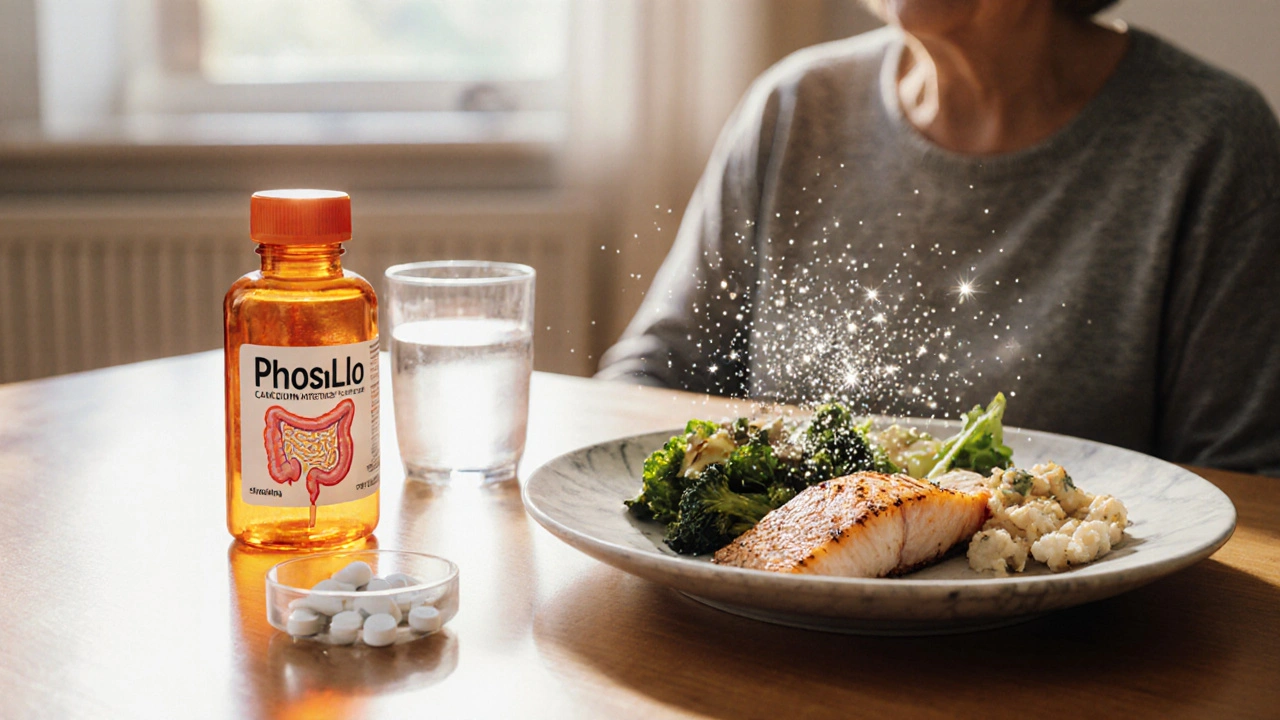Phosphate Binder Comparison: Finding the Best Fit for Your Kidney Health
When working with Phosphate Binder Comparison, the systematic evaluation of drugs that bind dietary phosphate in the gut to lower blood phosphate levels, a must‑know for anyone dealing with chronic kidney disease. Also known as phosphate binder guide, it helps clinicians and patients weigh effectiveness, safety, and cost.
One major player in this space is Sevelamer, a non‑calcium polymer binder that reduces serum phosphate without adding extra calcium load. Another common option is Calcium Acetate, a calcium‑based binder that not only lowers phosphate but also supplies calcium, which can be a double‑edged sword for bone health. Finally, Lanthanum Carbonate, a chewable lanthanum‑based binder praised for its low pill burden and minimal calcium impact rounds out the three most frequently discussed choices.
Why the Comparison Matters
Phosphate binder comparison requires a clear view of hyperphosphatemia, the condition of elevated phosphate in the blood that accelerates vascular calcification and bone disease. Understanding hyperphosphatemia influences which binder you might pick: if calcium overload is a concern, a non‑calcium binder like sevelamer or lanthanum becomes attractive. If you need extra calcium to support bone density, calcium acetate might be the right fit. Each binder also brings its own side‑effect profile—gastro‑intestinal discomfort for sevelamer, constipation for calcium acetate, and potential lanthanum accumulation for lanthanum carbonate.
Beyond the chemical differences, patient lifestyle plays a huge role. Sevelamer comes as a powder mixed with food, which can be handy for those who struggle with large pills. Calcium acetate is typically a tablet, making dosing straightforward but adding to pill count. Lanthanum carbonate’s chewable tablets can be swallowed quickly, reducing the burden for dialysis patients who already juggle many medications. These practical points connect directly to the overall goal of maintaining low serum phosphate without compromising quality of life.
Cost is another crucial thread. Generic calcium acetate often wins on price, while branded sevelamer can be pricey, especially without insurance coverage. Lanthanum carbonate sits somewhere in the middle, with some insurance plans offering favorable tiers. When you line up effectiveness, side effects, and out‑of‑pocket costs, the comparison becomes a decision tree that helps clinicians tailor therapy to each individual's medical history and financial situation.
Clinical guidelines from nephrology societies stress that the choice of binder should be individualized. They recommend assessing baseline calcium levels, cardiovascular risk, and bone turnover markers before settling on a binder. This recommendation creates a semantic link: phosphate binder comparison requires assessment of calcium status and influences cardiovascular outcomes. By keeping these relationships front‑and‑center, you can avoid common pitfalls like overtreatment with calcium‑based binders that might worsen vascular calcification.
Real‑world data also show that many patients switch binders over time. A study of dialysis clinics found that about 30% of patients changed their binder type within a year due to side‑effects or inadequate phosphate control. This churn highlights why a solid comparison framework is essential: it lets you anticipate when a switch might be needed and what alternative will address the new challenges.
For those new to the topic, think of phosphate binder comparison as a toolbox. Each tool—sevelamer, calcium acetate, lanthanum carbonate—has a specific shape and strength. Knowing when to use a hammer (calcium acetate) versus a screwdriver (sevelamer) makes the job faster and safer. The same principle applies to managing hyperphosphatemia: the right binder at the right dose can keep phosphate in check while preserving bone health and minimizing cardiovascular risk.
Below you’ll find a curated set of articles that dive deeper into each binder, explore side‑effect management, and offer practical tips for dosing and patient counseling. Whether you’re a patient looking for clear guidance or a healthcare professional seeking up‑to‑date comparisons, the collection provides actionable insights that build on the concepts introduced here.
PhosLo (Calcium Acetate) vs. Other Phosphate Binders - Which One Fits Your Needs?
A detailed comparison of PhosLo (calcium acetate) with key phosphate binders, covering efficacy, cost, pill burden, side effects, and how to choose the right option.
